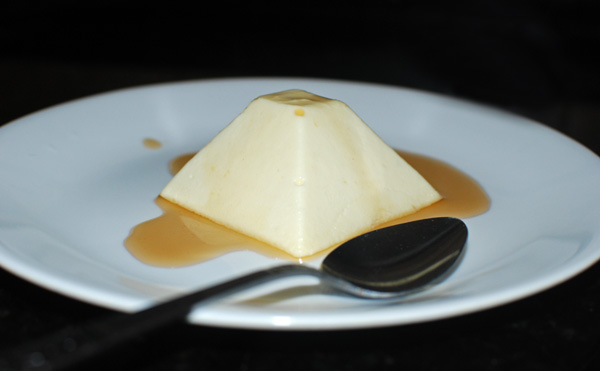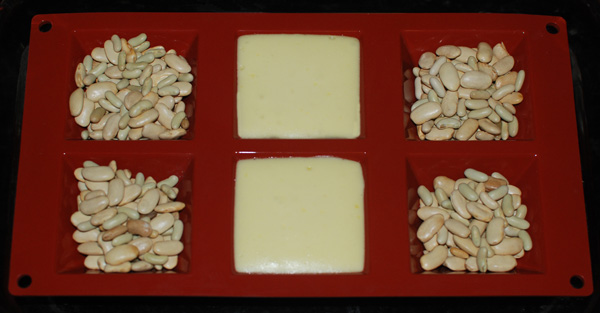Paskha is a traditional dessert made of tvorog and shaped like a truncated pyramid. Culinary writer William Pokhlebkin notes that the cost of the dish used to mean that simple people could only afford it about once a year, and chose to time it for the end of the Lenten fast in the orthodox faith — in fact, the very name paskha comes from the name of Paskha, the Orthodox Easter! However, nowadays it is prepared at any time of the year regardless of the religious holidays.
Paskhas can be raw, cooked like a custard, or baked. In addition to the tvorog, they can contain cream, butter, eggs, sugar, nuts and dried fruits. The raw ones rely on whipped cream to hold their shape, while the cooked ones use egg yolks. Anything not baked is shaped using a wooden mold called pasotchnitsa.
I chose to make a baked paskha, similar to a very light cheesecake. I also prefer not to use nuts or fruits inside the paskha and instead add them later as elements that will complete the plated dessert. In order to keep the traditional shape but make individual portions, I am using a pyramid silicon mold: each pyramid measures 2.75″ length x 2.75″ width x 1.5″ high and contains 2.5 fl. oz.
Baked paskha
Yields 5 servings
12 oz tvorog
1 egg
1 egg yolk
1 tbsp flour
3 oz sugar
- In the bowl of an electric mixer fit with the paddle attachment, beat the tvorog, egg, egg yolk, flour, and sugar for 1 minute on medium speed.
- Pour into silicon pyramid molds placed into a baking dish filled half-way with cold water. (If any of the pyramid compartments remain empty, fill with dry beans to prevent the mold from floating.) Bake in a 300 F oven for 35 minutes.
- Remove from the oven and let cool. Remove the molds from the water bath, cover with plastic wrap and refrigerate for at least 8 hours.
- Unmold the paskhas just before serving and complement with fruit preserve or honey.



1 comment
[…] and a half years after publishing my recipe for baked paskha (one of my first blog entries!), I finally posted my kulich last week. So you can now prepare the […]